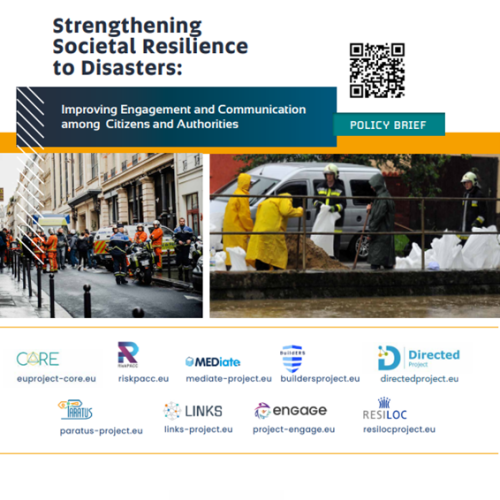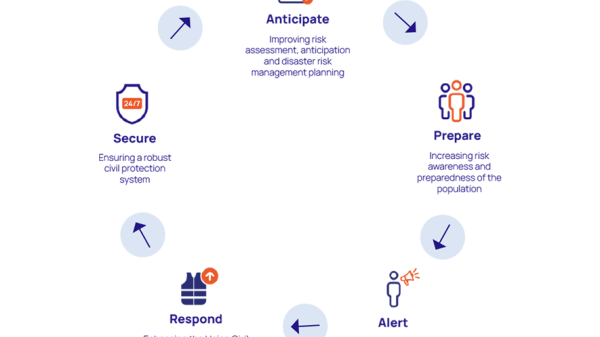
Strengthening Societal Resilience to Disasters - a synthesis policy brief
"Improving Engagement and Communication among Citizens and Authorities" based on synergy-building of 9 Horizon projects and 100+ organisations.
The new evidence document on Strengthening Societal Resilience to Disasters: Improving Engagement and Communication among Citizens and Authorities expresses recommendations and actions from a high critical mass of multi-sectoral and pluridisciplinary knowledge in support of civil protection and related policies towards improved engagement and communication among authorities and citizens in DRM. It has been produced by nine Horizon projects (LINKS, ENGAGE, RiskPACC, CORE, MEDIATE, PARATUS, BuildERS, RESILOC, and DIRECTED) under the Societal Resilience Cluster and gathers the views of more than 100 organisations.
The outcomes from the Societal Resilience Cluster projects are built on decades of research and experience. They demonstrate the positive impacts of an all-of-society approach for involving members of the population in disaster risk management. Good examples of these initiatives include earthquake and tsunami preparedness and evacuation programmes implemented together by authorities and schools in Japan, and the preparatory actions of local women in the Italian city of L’Aquila before it was struck by a devastating earthquake in 2009, where bags had already been prepared containing necessary items for their families in case of a quick evacuation from their homes.
More recently, the mobilisation of community resources for emergency food and shelter during the response phases of wide area floods in Germany in 2023 demonstrated where shared objectives and inclusive communication among the population and authorities can contribute to strengthening disaster management efforts.
The recommendations are grounded in an all-of society approach, aimed at strengthening societal inclusion in Disaster Risk Reduction (DRR). This entails broad-based participation in disaster risk management through engagement with different stakeholders including formal authorities and response organisations, businesses and private actors, and volunteers and citizens, including those which are marginalised and most vulnerable. Hence, the recommendations contribute directly to the achievement of the goals and outcomes within the Sendai Framework for Disaster Risk Reduction around building resilient communities as well as the European Union’s Disaster Resilience Goals and Climate Adaptation Strategy towards increasing preparedness and enhancing a culture of risk prevention amongst the population.


Sectors
Risk drivers